With the Calliope mini you can also make a musical instrument - from everyday objects such as spoons, forks or scissors from the kitchen. Each object should create its own sound or even its own melody. The Calliope mini should notice that an object is touched and then play a sound. The Calliope mini does this through a closed circuit.
INFO:
You can imagine electric current as the movement of tiny particles: electrons. They carry the current from start to finish. For this there must be a connection without gaps from the minus pole to the plus pole +. The connection can go through a device such as our Calliope mini. Then electricity flows and you say: "The circuit is closed".
- 4 everyday objects
- 5 coloured clip connectors
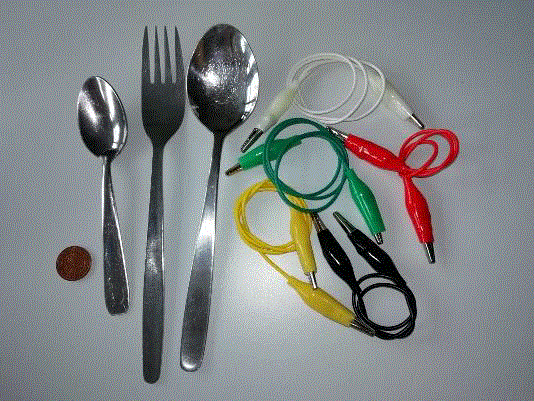
Start a new project. Click on Projects in the upper left corner and then on New Project!
- Name your project:
- Delete all blocks!

Now clamp all clip connectors to your Calliope mini
Foto 02
- Clamp a crocodile cable to the negative pole of the Calliope mini.
- Connect the other 4 clip connectors with other colors to pins 0 to 3.
Only the positive pole remains free.
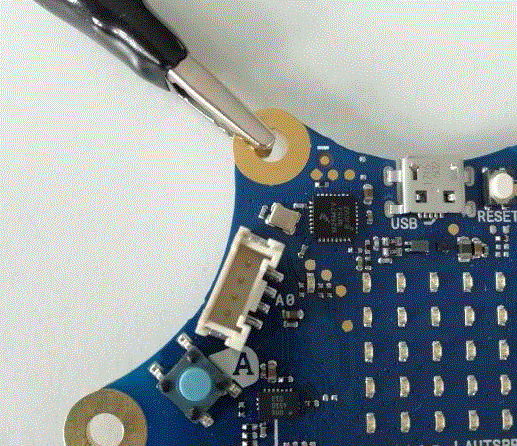
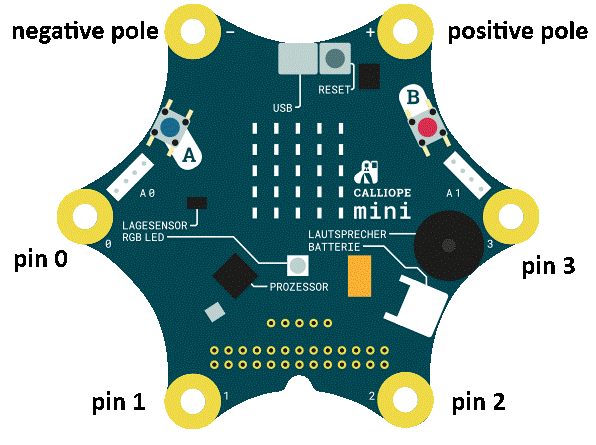
- Clamp the other end of the clip connector from pin 0 to pin 3 to your items.
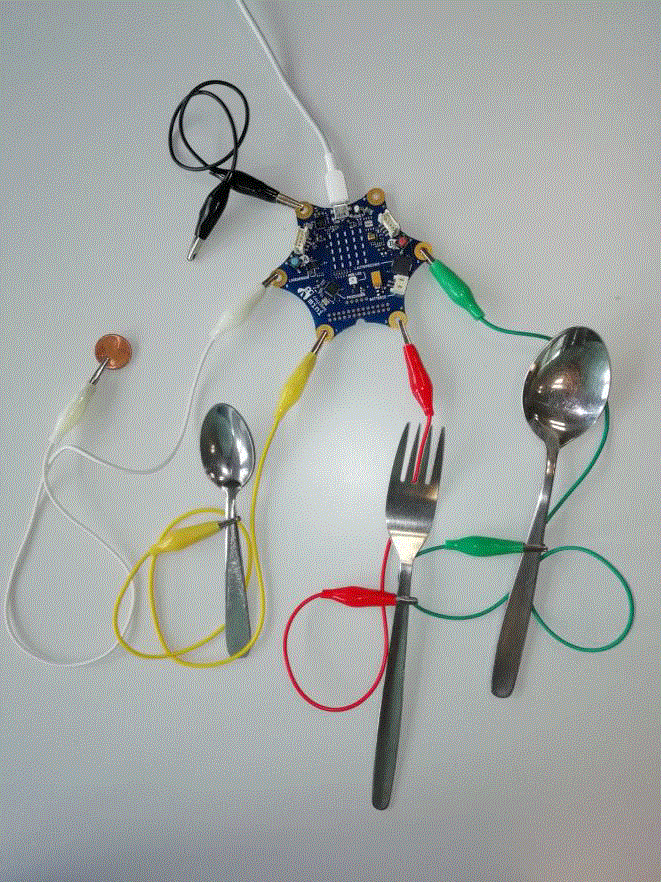
- Connect your Calliope mini to your computer. The cable at the negative pole is the only one not hanging from an object.
First, your Calliope mini should play music on a closed circuit. As soon as you touch the object of pin 0 with the clip connector of the negative pole, the circuit is closed.
- Choose these blocks from the category Input and from the category Music and put them together: The block "when pin P0 is pressed" detects whether the circuit is closed or open.

- Download your program to the Calliope mini.
- Now hold the connector of your cable from the negative pole to the item you have connected to P0. Do you hear a sound?
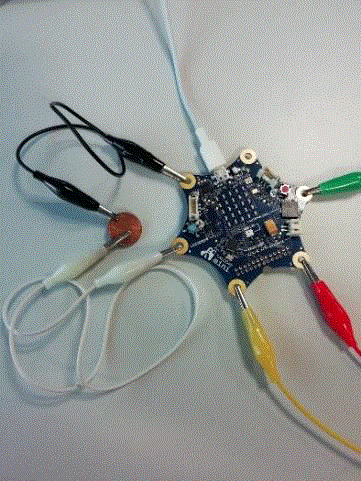
INFO:
The current flows from the "Calliope mini" through the negative pole and through pin 0. Then the current flows through your object, if your object is connected to the crocodile cable from the negative pole. This is your closed circuit! The Calliope mini thinks that pin 0 has been pressed.
If the circuit at pin 0 is now closed, your Calliope mini will play music. Expand your program for pin 1 and test what happens.
- Drag the two blocks "when pin P0 is pressed" and "play note middle C for 1 bar" again into your program.
- Put them together again.
Why are the new blocks gray?
In the outer block, change P0 to P1. Change C to A in the inner block.

INFO
A gray colored block is not recognized by the editor. There can be two reasons for this:
Block must be puzzled in somewhere
Block or blocks already exist exactly like this
So far, music is only played on pin 0 and pin 1. Extend your program to play music at pin 2 to pin 3!
- Pull these two blocks into your program and put them together.
- change P0 in the block "when pin P0 is pressed" to P2.


- Repeat all three steps for pin 3.
INFO
The items you got are all made of metal. They conduct the current especially well because the electrons can pass through metal well. This is called conductive. But also other things are electronically conductive, for example fruits like bananas and lemons!
There you go! You built music instruments with the Calliope mini. Have fun with your kitchen music!
Display the letter of your music on your Calliope mini.
- Select this block from basics and place it under the music block

As soon as the circuit at pin 0 is closed, the sound is played and "Hello" is written. But you want to write the letter of your tone! What do you have to do?
Answer: Change "Hello" in the letter of the tone, here "C".
Repeat the previous steps for pin 1 to pin 3!
Test your program with other objects. Which items does your circuit work with? Draw a table and fill it with all the items you found.
This text as well as the images are published under a CC BY-SA 3.0 DE license popup: yes. It was originally published in German popup: yes by InfoSphere popup: yes and translated into English by the Calliope team.


